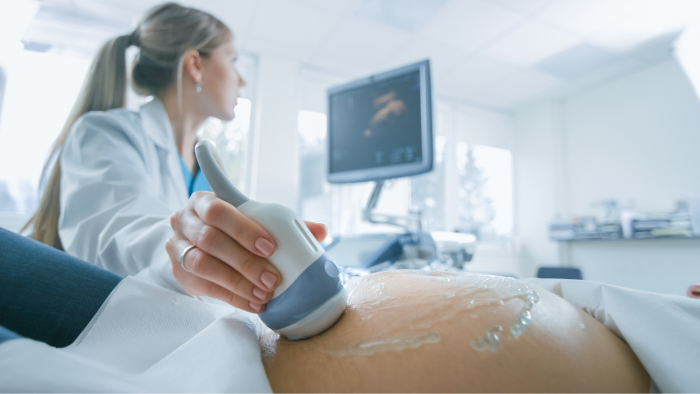Oxygen concentrators require precise control over oxygen flow rates (e.g., medical oxygen concentrators typically adjust between 1-10 L/min). Ultrasonic sensors can monitor flow in real-time and feed back to the control system, ensuring output accuracy.

Working Principle:
A pair of ultrasonic sensors (transmitter T and receiver R) is installed on either side of a pipeline at a specific angle (usually 45° to the gas flow).
When the gas flows, the ultrasonic propagation speed differs between downstream (v+u) and upstream (v−u), where v is the ultrasonic speed in still air and u is the gas flow speed.
By measuring the time difference (Δt) between downstream and upstream travel times, the gas flow speed (u) is calculated, which is then used to compute the flow rate (Q).
Formula:
<math xmlns="http://www.w3.org/1998/Math/MathML">
<math xmlns="http://www.w3.org/1998/Math/MathML">
Where L is the distance between sensors, and t1/t2 are the travel times for downstream and upstream.
Advantages:
Non-contact measurement, avoiding interference with airflow and contamination, ideal for clean oxygen environments.
Fast response (milliseconds), enabling dynamic flow rate adjustment in real-time (e.g., auto-adjusting based on patient’s breathing rate).
Medical Oxygen Concentrators: Precise control of oxygen flow (e.g., low-flow continuous oxygen for COPD patients, with flow error < 5%).
Industrial Oxygen Equipment: Monitoring output efficiency and optimizing energy consumption of large-scale oxygen generation units.
Medical Molecular Sieve Oxygen Concentrators:
Ultrasonic flow sensors monitor oxygen output, coupled with a PID controller for automatic adjustment (e.g., response time < 2 seconds when switching from 1L/min to 5L/min).
Humidification Bottles:
Ultrasonic level sensors automatically pause oxygen generation and activate an alarm if the water level falls below the safety line.
Home Healthcare Oxygen Concentrators:
Ultrasonic bubble sensors detect excess bubbles due to low water levels and automatically activate a water pump to maintain stable humidification.
High-altitude Oxygen Equipment:
In low-pressure environments, ultrasonic sensors monitor intake flow to adjust working frequency and ensure stable oxygen output at high altitudes.
Contact Us
If you have any questions about our products and services, please fill out the form and contact us.